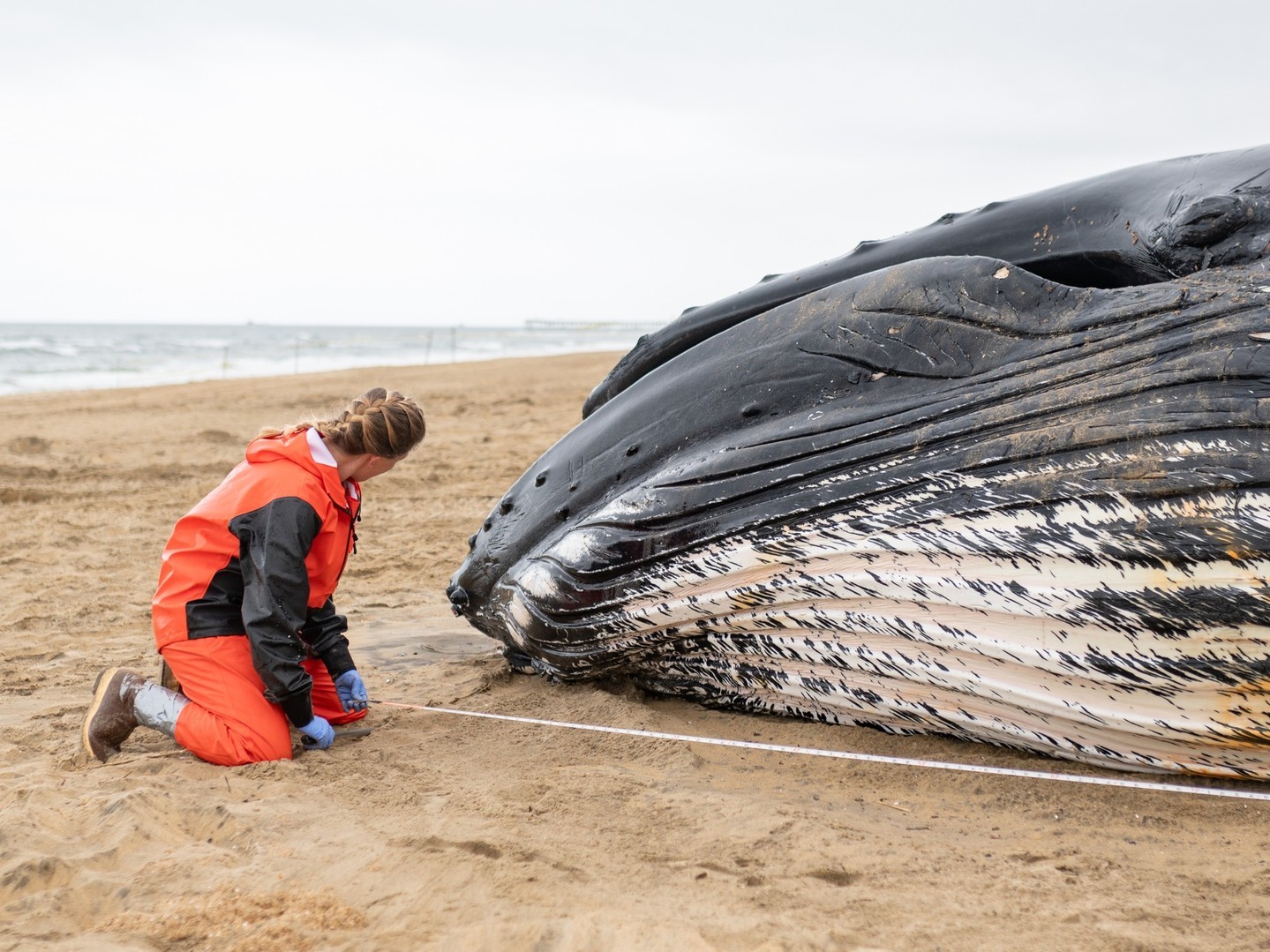– Stranding Response team’s role in necropsy and data collection
– The impact of human activity on marine life, as evident from whale necropsies
– The significance of necropsies for conservation efforts and understanding marine life health
– Challenges faced by Stranding Response teams and the methods used for examination
– Correlation between necropsy findings and broader environmental health issues
When a majestic creature as large as a humpback whale is found deceased along our coastlines, it is a sad reminder of the beauty and fragility of marine ecosystems. The recent strandings of two juvenile male humpback whales, one at Virginia Beach Oceanfront and the other at False Cape State Park, triggered the intervention of a dedicated Stranding Response team. This group of professionals, specialized in examining and understanding the lives of marine animals, performed thorough necropsies to gather critical data about these animals’ lives and the circumstances leading to their untimely deaths.
The Stranding Response team is instrumental in the field of marine conservation. Their operations span data collection through meticulous autopsies on beached marine mammals. In recent cases, the teams were tasked with an exhaustive physical examination of the two humpback whales, both externally and internally. Weighing in at a significant 32,000 and 21,800 pounds respectively, these were no small specimens, and the efforts required for such an examination were significant.
The necropsies’ insights include notable findings, emphasizing the abnormal skin lesions on both whales and the old scars marking a history of entanglement. The presence of these scars paints a stark picture of marine life’s ongoing skirmishes with human-engineered hazards in the ocean. Despite their size, these whales were not immune to the unseen barriers and traps that marine debris and fishing gear can create.
Photographic documentation is a crucial part of the process. Snapshots of the team working meticulously around the whale carcasses serve multiple purposes. During the examination, they record the animal’s condition and any distinguishing features. They show precise incision techniques and the steps followed during the autopsy. They provide permanent visual data to accompany tissue samples collected. These images and samples support the Stranding Response team’s investigations long after the whales’ bodies have been buried and returned to the earth.
The relevance of whale necropsies transcends the immediate findings. Necropsies provide an invaluable body of knowledge that feeds into the larger marine ecology and conservation narrative. They shine a light on life history, health, and the impacts of anthropogenic influences on these marine giants. The goal is to decode the life history of the whales through these biological samples, extending our understanding of species health, population dynamics, and threats faced in marine environments.
Performing an autopsy on such a large marine mammal presents many challenges. The team must work seamlessly together, navigating through fat and muscle layers to access vital organs. The Stranding Response team’s expertise allows them to distinguish between what might be normal variations in whale anatomy and what constitutes potential evidence of trauma or disease.
These marine autopsies also signal the mercurial health of our oceans. Analysis of the collected tissues can detect signs of infection, disease, chronic stress, or exposure to harmful contaminants—all of which serve as indicators of oceans under duress. In doing so, the Stranding Response team’s work aids in painting a broader image of ocean health and contributing to the ongoing dialogue about sustainability and conservation measures needed to protect marine life.
This Stranding Response team’s efforts underscore the continued need for conservation programs, public education, and research funding to protect marine creatures. The alliance between zoologists, marine biologists, and conservationists is critical to the survival of species like the humpback whale, especially as they face increasing challenges from human activities. The knowledge gained through the intricate process of an autopsy can expand our collective understanding of how ecosystems function and change over time, informing conservation strategies that may help mitigate future risks these animals face.
In summary, the response to these whale strandings involves expertise, dedication, and an unwavering commitment to the environment. It is a narrative of death, life, understanding, and the pursuit of knowledge. As the Stranding Response team navigates the aftermath of these events, their findings lay the groundwork for future conservation efforts and foster a greater appreciation for the intricate balance of life in our shared ocean spaces. Their meticulous efforts are a testament to the steadfast passion required to ensure the vitality of marine ecosystems for generations to come.
*****
Source Description
Our Stranding Response team successfully performed necropsies (animal autopsies) on two juvenile humpback whales last week. The in-field assessments, which included the internal and external exams, have been completed, and the animals have been buried. Tissue samples for life history and diagnostics were collected from both whales. The team will analyze the samples, photos and data they collected to try to determine the cause of death, which is unknown at this point. This step takes careful assessment and time. The first whale, 32 feet long and weighing approximately 32,000 lbs., was stranded on Sunday, March 3, at the Virginia Beach Oceanfront. The second whale, 27 feet long and weighing approximately 21,800 lbs., was stranded on Monday, March 4, at False Cape State Park.
Our team has already learned some important details about these whales’ lives. Both whales were immature males. They had some abnormal skin lesions that we are continuing to investigate, and both whales showed evidence of healed scars from previous entanglements, which are a sub-lethal and chronic part of these animals’ lives. The entanglement scars remind us that we share the ocean, and our activities can impact the ocean environment and its inhabitants.
Photos: various shots of the Stranding Response Team gathering around the body of the deceased whale at the Oceanfront, examining it externally, measuring it, prepping for autopsy, and taking photos of its record ID number over its body as well as sample tissues taken from it during necropsy.

